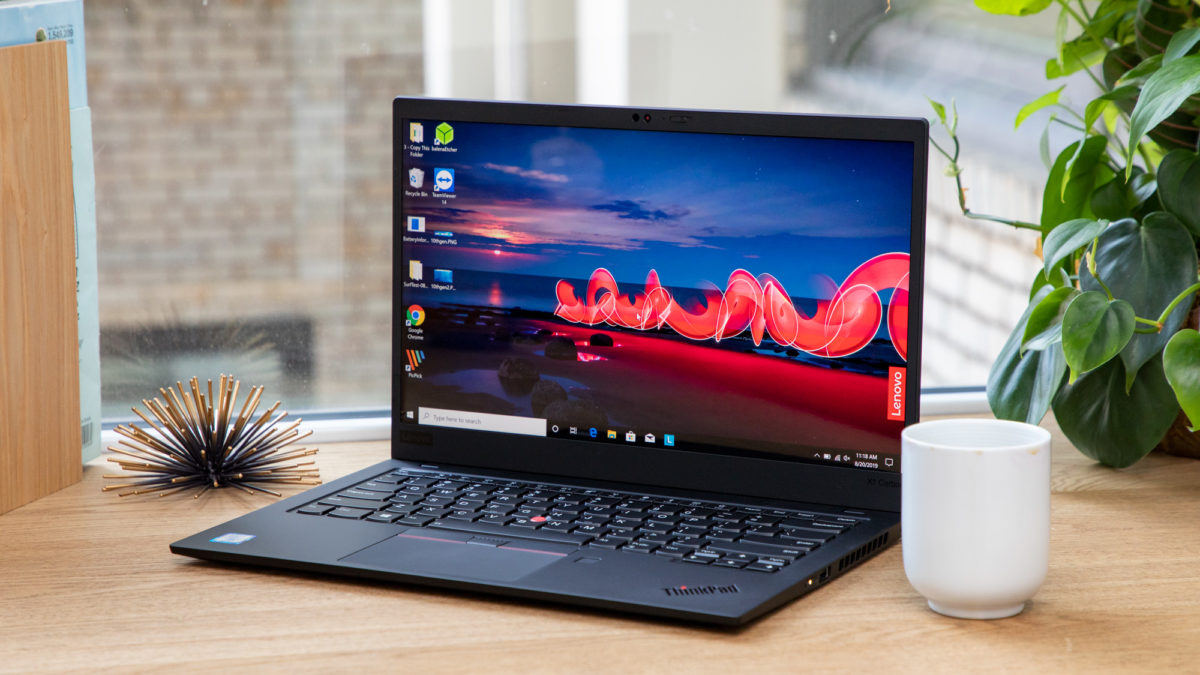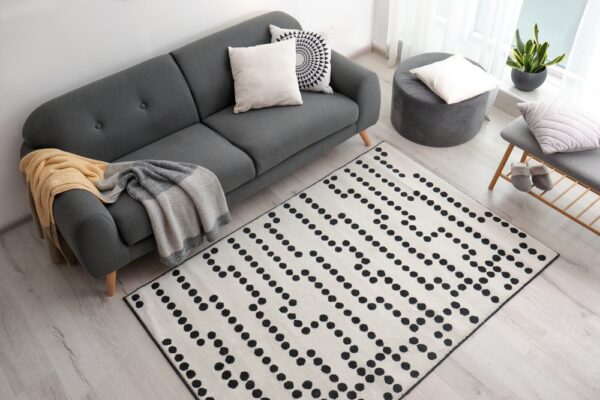Finding the best laptop is more essential than ever, especially now that many of us are working and learning from home. A great laptop will allow you juggle a myriad of work and school tasks, while remaining portable and long-lasting enough to let you stay productive on the go.
Plus, there’s never been more variety when shopping for the best laptops. There are plenty of ultraportable machines that pack huge power into svelte designs, as well as beefy gaming laptops meant to handle the latest games at high settings. Chromebooks are a popular option for students thanks to their affordable prices and easy to use software, and you can even snag a 2-in-1 laptop that doubles as a tablet.
With so many options to choose from, finding the right laptop can be daunting. That’s why we’ve put together this list of the most popular notebooks available to help you pick the very best laptop for your needs — and your wallet.
Dell XPS 13 2020
Display: 13.4 inches; 1,920 x 1,080-3,840 x 2,160 | CPU: 10th-Generation Intel Core i3-i7 | GPU: Intel UHD to Intel Iris Plus | RAM: 8GB-16GB | Storage: 256GB-2TBGB SSD | Weight: 2.64 pounds
It’s hard to improve upon near-perfection, but the Dell XPS 13 2020 manages to make the best laptop you can buy even better. Dell’s latest flagship PC comes outfitted with Intel’s latest 10th Gen processors, which make multitasking between apps and even doing some light gaming a breeze. The laptop’s Infinity Edge display now sports a screen-to-body ratio of 91.5%, with virtually no bezel to get in the way of your favorite movies and TV shows.
There are also some smaller improvements that make the Dell XPS 13 2020 better than its predecessors. The notebook’s comfortable keyboard is now edge-to-edge, and the touchpad is 17% larger, making it much easier to crank away at work documents for long stretches of time without getting cramped up. Factor in some small material changes that make its gorgeous aluminum design even more of a delight to use and hold, and the Dell XPS 13 2020 easily stands out at the top of its class.
Acer Aspire 5
Display: 15.6 inches; 1,920 x 1,080 | CPU: Intel Core i3 | GPU: Intel UHD Graphics 620 | RAM: 4GB | Storage: 128GB SSD | Weight: 3.76 pounds
The Acer Aspire 5 proves you don’t have to spend a lot to get a great laptop. This notebook includes a full HD display that’s fairly bright, so it’s great for surfing the web, doing quick photo edits and watching videos on YouTube, Netflix or Disney Plus. And it has all the power you need for everyday tasks and light multitasking, thanks to an 8th generation Core i3 processor, 4GB of RAM and 128GB SSD. It’s all wrapped up in a fairly light 3.8-pound package.
The most pleasant surprise with the Aspire 5 is its battery life. This laptop lasted nearly 9 hours on our web surfing battery test, which is very good for a 15-inch system. There are a couple of things we don’t like about this budget laptop; while the lid is a premium aluminum, the rest of the machine is made of plastic. You also shouldn’t expect to play the latest games. But overall the Aspire 5 is the best Windows laptop under $600.
MacBook Air 2020
Display: 13.3 inches; 2,560 x 1,600 | CPU: 10th-Generation Intel Core i3-i5 | GPU: Intel Iris Plus Graphics | RAM: 8GB-16GB | Storage: 256GB-2TB SSD | Weight: 2.8 pounds
It’s amazing what a difference the right keyboard makes. Starting at $999, the MacBook Air 2020 packs the improved Magic Keyboard, which replaces the butterfly switch with a scissor-style mechanism that allows for much more comfortable typing.
Apple also upgraded the Air to 10th Gen Intel Core processors (from 8th Gen). It’s a Y-series chip (which isn’t as powerful as U Series CPUs), but it proved enough for everyday use and basic multitasking. In addition to lowering the price by $100, Apple doubled the default MacBook Air storage, from a 128GB SSD to a 256GB drive, which is still offering blazing-fast read speeds.
The MacBook Air also packs plenty of endurance, with all-day battery life. It took 9 hours and 31 minutes (nearly 50 minutes longer than the typical system) for our web surfing test to drain the MacBook Air of its charge. Add in Apple’s fairly bright and colorful Retina display and surprisingly strong speakers, and you have the best laptop for most Apple fans.
Lenovo Chromebook Duet
CPU: 2.0GHz octa-core MediaTek Helio P60T | RAM: 4GB | Storage: 64GB eMMC, 128GB eMMC | Display: 10.1 inches, 1920 x 1200 pixels | Dimensions: 9.64 x 6.66 x 0.71 inches (docked) | Weight: 2 pounds (docked)
This one doesn’t really make sense — that’s how good of a deal it is. At $279, the Lenovo Chromebook Duet storms into the front of the conversation when it comes to value. Not only is it a tablet Chromebook, but its keyboard comes free — something that we don’t expect to see from the iPad or any Surface, even the more-affordable Go. Oh, and it’s also a solid tablet too, thanks to strong color output and a sharp resolution that you rarely see at this price point.
The Chromebook Duet also sees ChromeOS gain some touchscreen tablet optimizations that it’s needed for a while, making it easier to navigate all of your tabs. Oh, and as if that wasn’t enough, it’s got amazing battery life, lasting 12 hours and 47 minutes, nearly 13 hours, on our web-surfing test. The only knock against it? Its keyboard might take some getting used to for larger handed-folks.
Samsung Galaxy Book Flex
Price: $1,399 | Processor: 10th Gen Intel Core i7 (Ice Lake) | Memory: 12GB of RAM | Storage: 512GB SSD | Display: 15.6″ QLED (1920 x 1080 pixels) | Size: 14 x 8.9 x 0.6 inches | Weight: 3.4 pounds | Ports: 2x Thunderbolt 3, 1x USB-C microSD reader, headphone jack
Samsung’s hit-miss record hasn’t been great in laptops, but the Galaxy Book Flex is definitely a win. Available in 13-inch and 15-inch designs, this laptop offers amazing all-day battery life (15+ hours!) and comes in a gorgeous blue finish. Its QLED panel gets pretty bright, and has an Outdoors Mode that helps fight glare for better readability. Oh, and the creative class will be happy to see that Samsung included the S-Pen, which docks on the laptop’s right side.
When you’re drawing on the Galaxy Book Flex’s screen, you’ll probably use it in tablet mode, as the panel bounces and wobbles a little when jabbed with the pen in laptop mode. And while typists might get over its slightly shallow keys quickly, the decision to put the fingerprint reader where half of the right Shift key should be is another hurdle to leap over.
Microsoft Surface Pro 6
Display: 12.3 inches; 2,736 x 1,824 | CPU: 8th-Generation Intel Core i5-i7 | GPU: Intel UHD 620 | RAM: 8GB-16GB | Storage: 256GB-1TB | Weight: 1.70-1.73 pounds
If you like the idea of a 2-in-1 but want a detachable display instead of a foldable one, then the Microsoft Surface Pro 6 is easily the way to go. The device offers powerful specs for the money, plus you can use the display in tablet mode, leaving behind the bulk of a keyboard and touchpad. That also makes the Surface Pro 6 one of the most portable Windows 10 devices out there, though you’ll have to pay an extra $160 for Microsoft’s Type Cover keyboard if you want the full laptop experience.
While the Surface Pro 6 is ultraportable, it doesn’t sacrifice too much on performance. In the base model, you’ll get an Intel Core i5 processor, 8GB of RAM and 256GB of storage. There are some great upgrade options, too, including the ability to get up to a huge 1TB of storage. Microsoft’s newer Surface Pro 7 offers better performance and packs a USB-C port, but its battery life isn’t as good as its predecessor.
How to choose the best laptop for you
Performance: If you only need something basic for surfing the web, consider a Chromebook or a cheap Windows laptop with an Intel Core i3 processor and 4GB of RAM. If you plan on getting more intensive work done, consider starting specs such as a Core i5 CPU, 8 to 16GB of RAM and a 256GB to 512GB SSD.
Graphics and gaming: Most mainstream laptops feature integrated graphics, which can handle lightweight titles such as Minecraft and Overwatch but aren’t ideal for intensive AAA games or heavy visual work. For that, you’ll want a laptop with a discrete graphics card, such as an Nvidia GTX 1660 or 2080 on the higher end.
Size: Consider how mobile you want your laptop to be. Machines such as the Dell XPS 13 and HP Elite Dragonfly are feather light with slim designs, while gaming notebooks such as the Razer Blade Pro and Alienware 17 have more heft to them (but offer big power in exchange).
Operating system: Laptops typically come in three flavors: Windows 10 (most mainstream PCs), macOS (MacBooks) and Chrome OS (Chromebooks). Windows 10 is the most common operating system, while macOS is more ideal for folks already tied into Apple’s ecosystem. Chrome OS is a lightweight operating system built to allow for cheap, fast systems, though it has gotten a bit more robust over the years with support for full Android apps.











